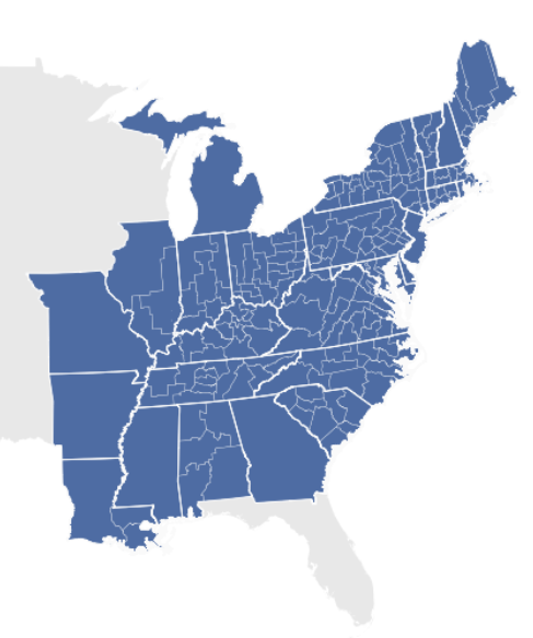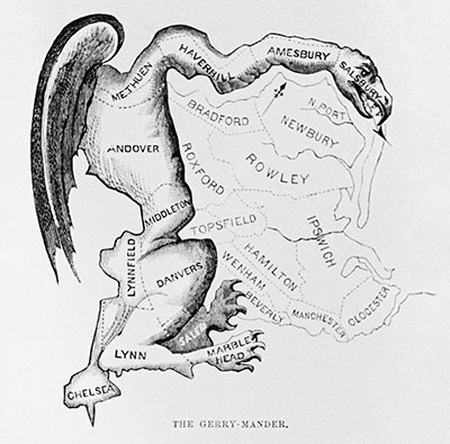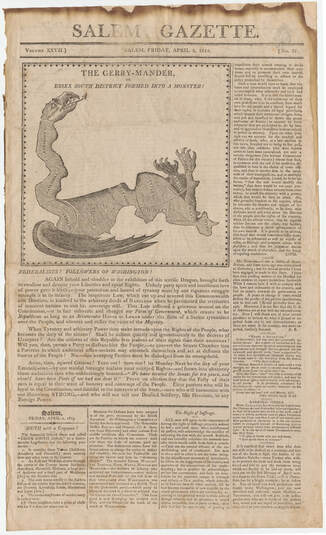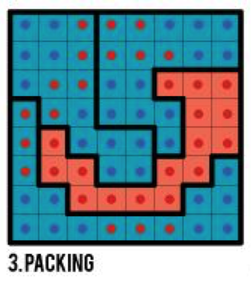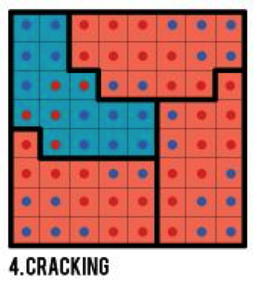The First Cracks Appear,
A New Term Is Coined
“The purpose and effect of a gerrymander is to negate
democracy - to prevent majority rule… [it] keeps one party
in power even if the people turn against it.”
-- Paul M. Smith, Professor of Law at Georgetown University and attorney for the appellees on numerous
landmark Supreme Court voting rights cases (from student-conducted e-mail interview on February 9, 2019)
State legislators start exploiting their power to
govern congressional elections, enacting electoral
procedures that advance partisan interests.
govern congressional elections, enacting electoral
procedures that advance partisan interests.

